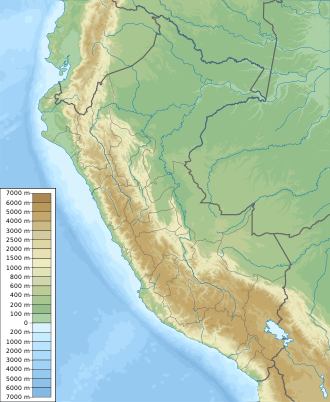| Sunchubamba Game Reserve | |
|---|---|
| Coto de Caza Sunchubamba | |
IUCN category VI (protected area with sustainable use of natural resources) | |
| Location | Cajamarca |
| Coordinates | 7°31′43″S78°29′06″W / 7.528651°S 78.485041°W |
| Area | 597.35 km2 (230.64 sq mi) |
| Established | April 22, 1977 |
| Governing body | SERNANP |
| Website | Coto de Caza Sunchubamba |
Sunchubamba is a game reserve in the region of Cajamarca, Peru.
